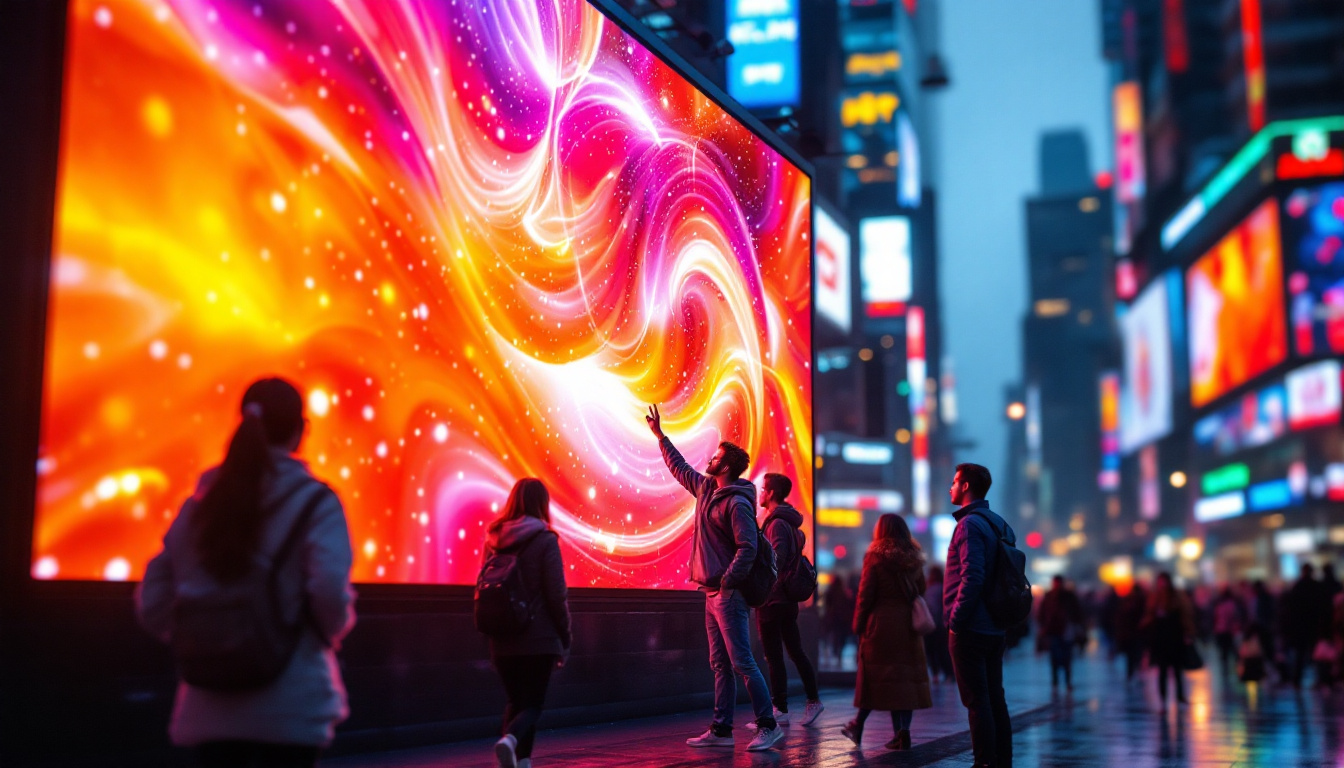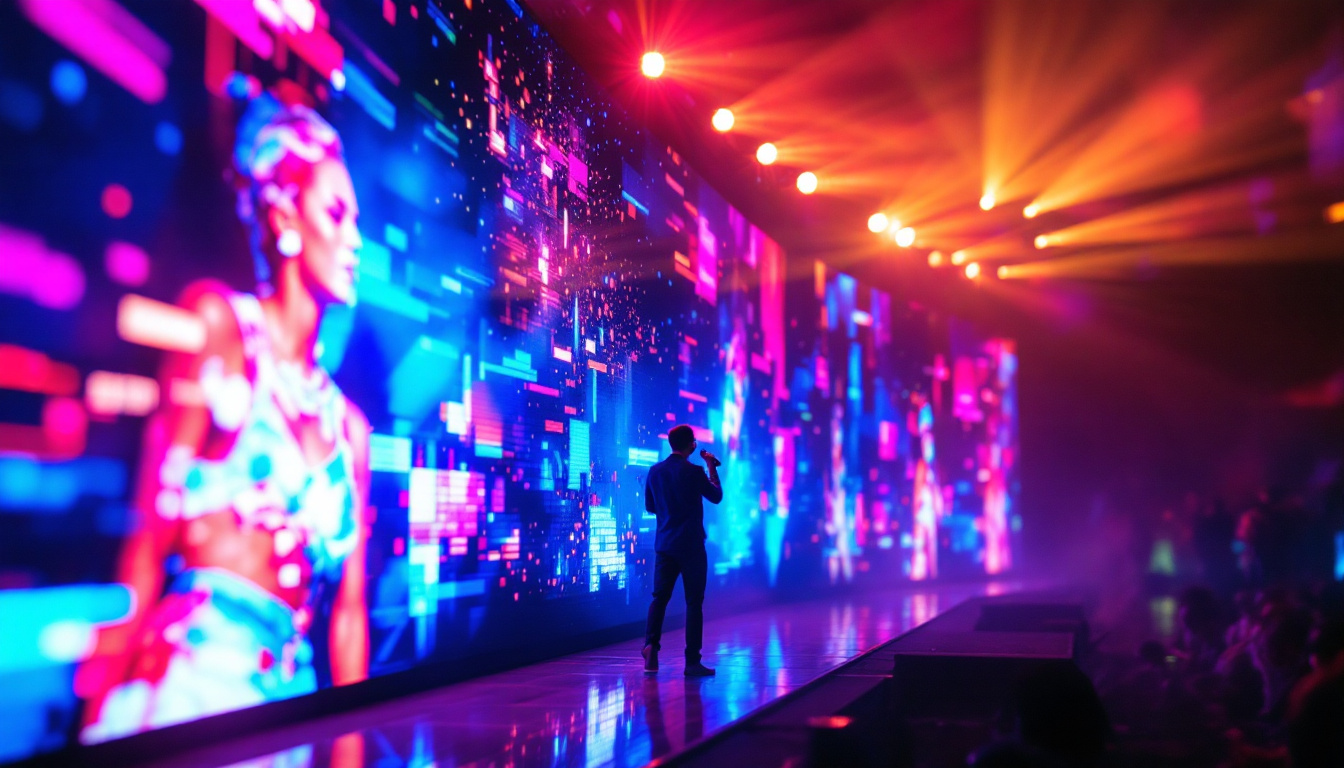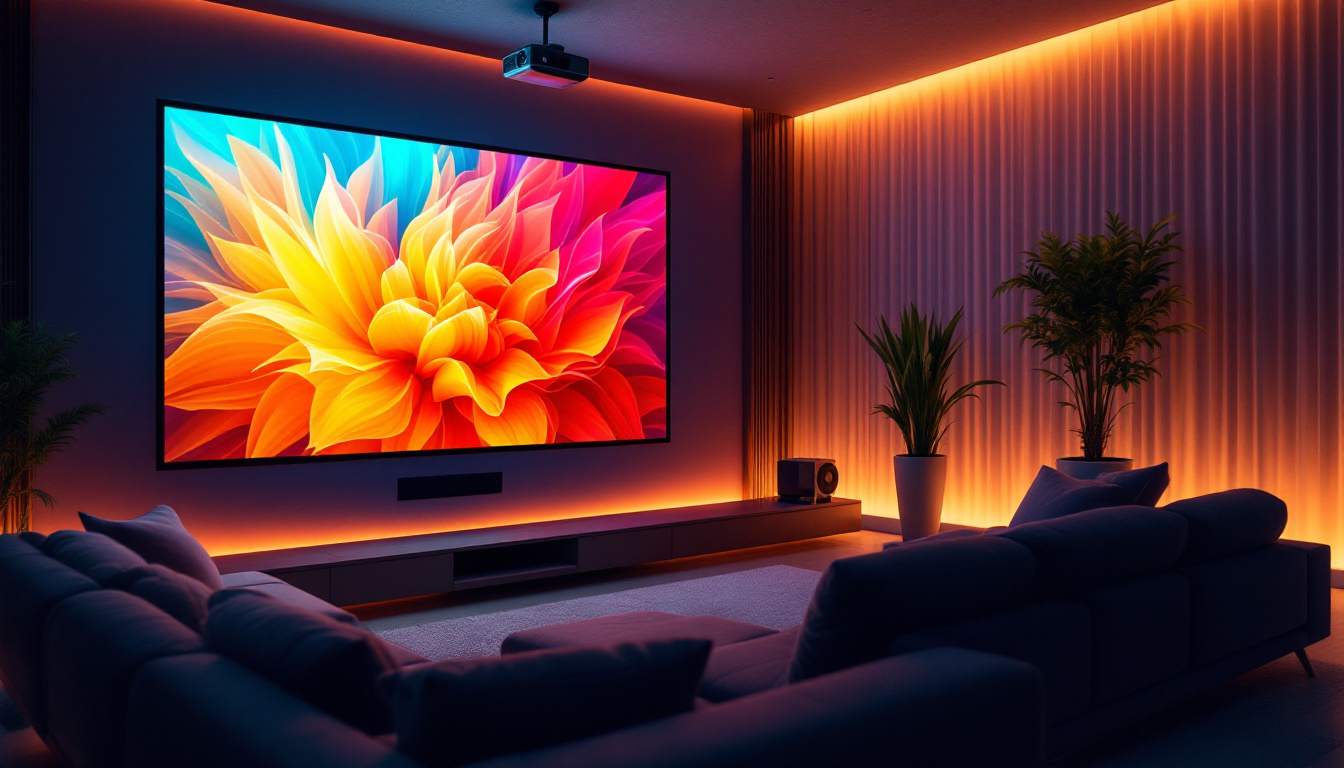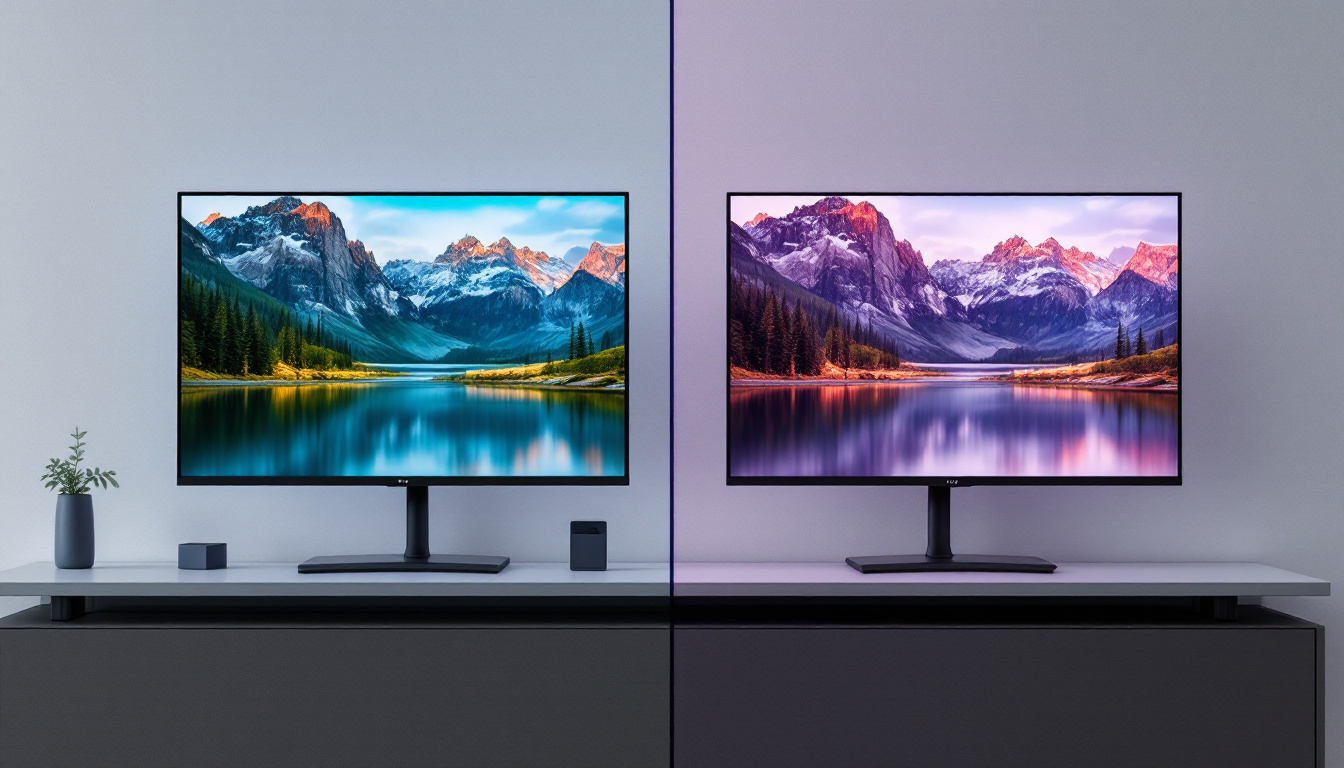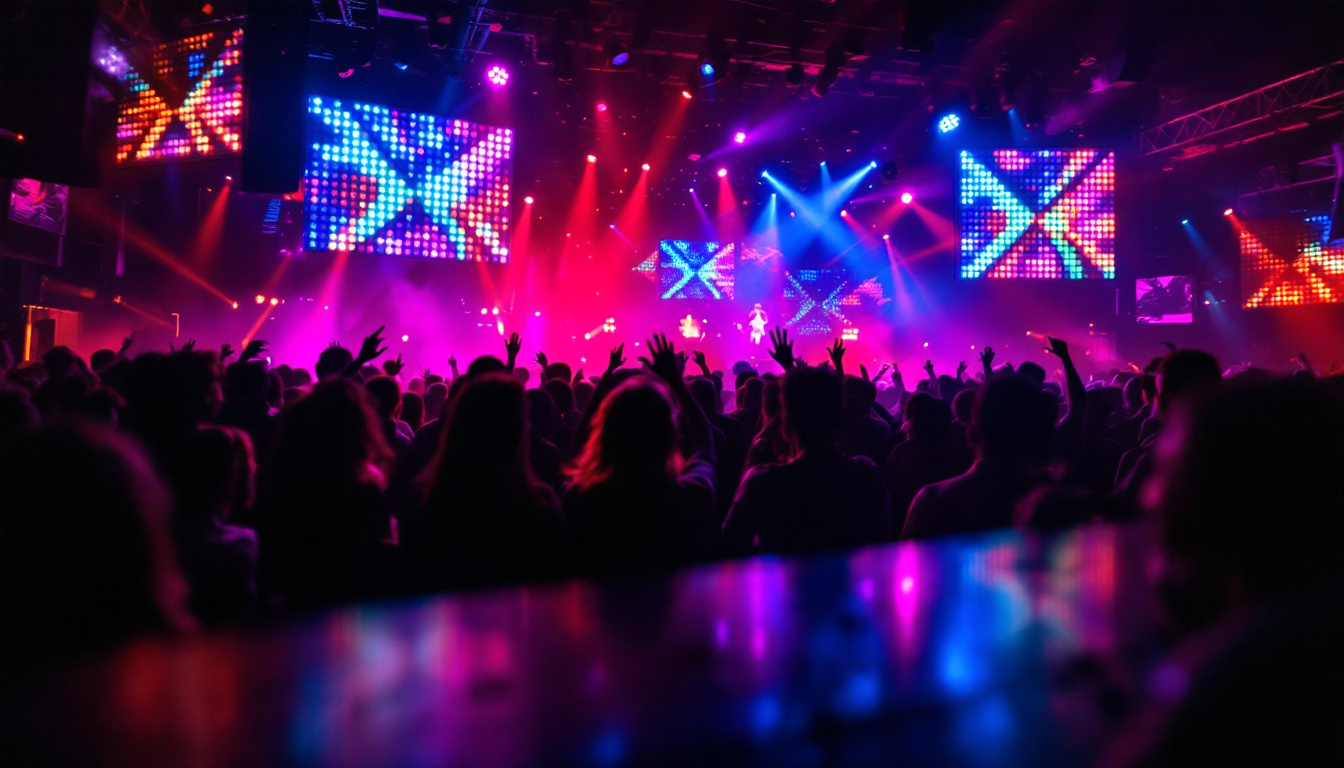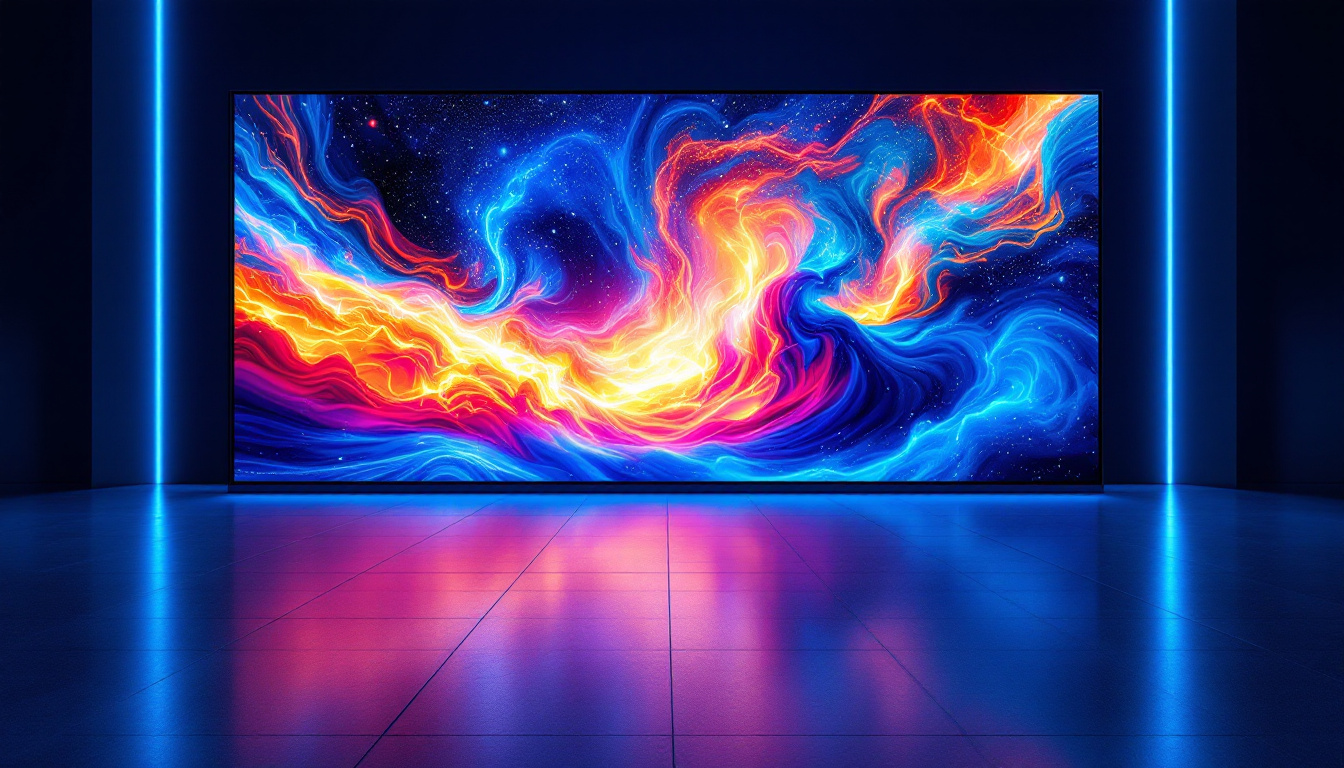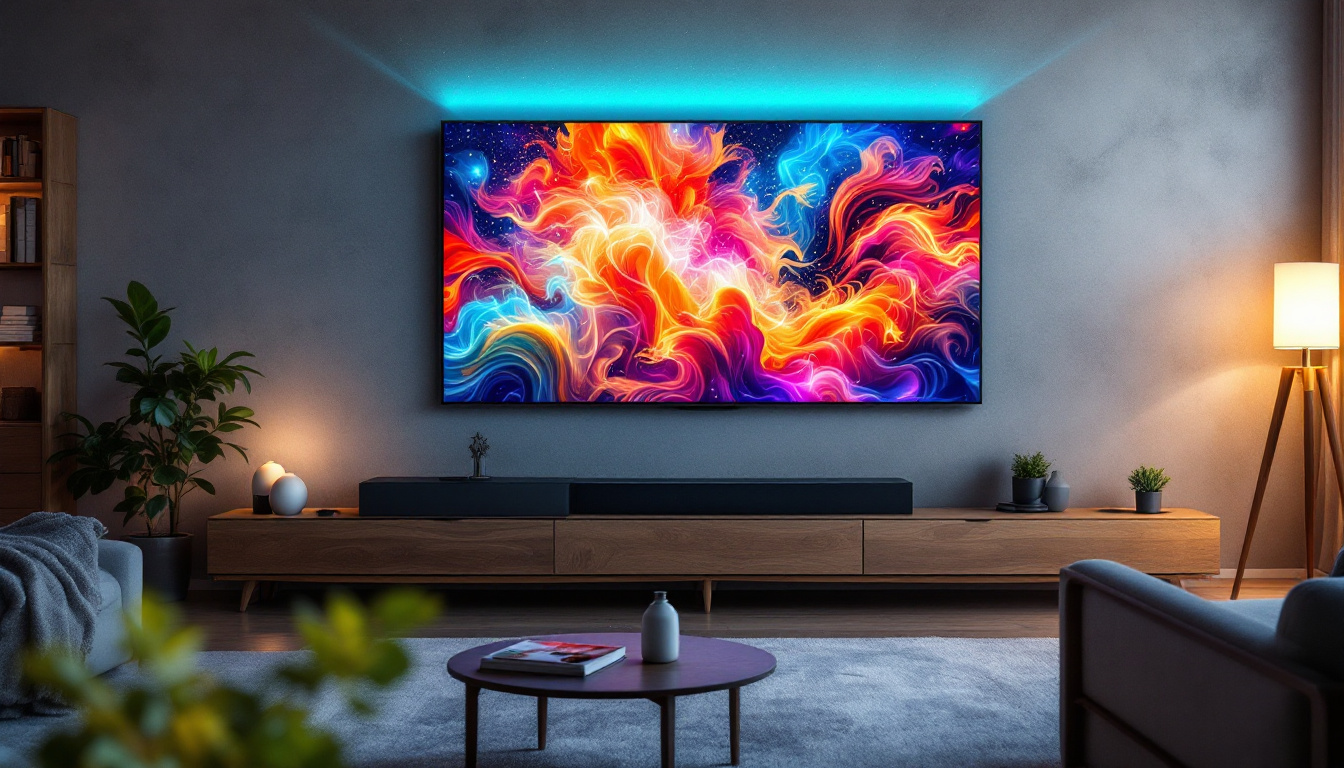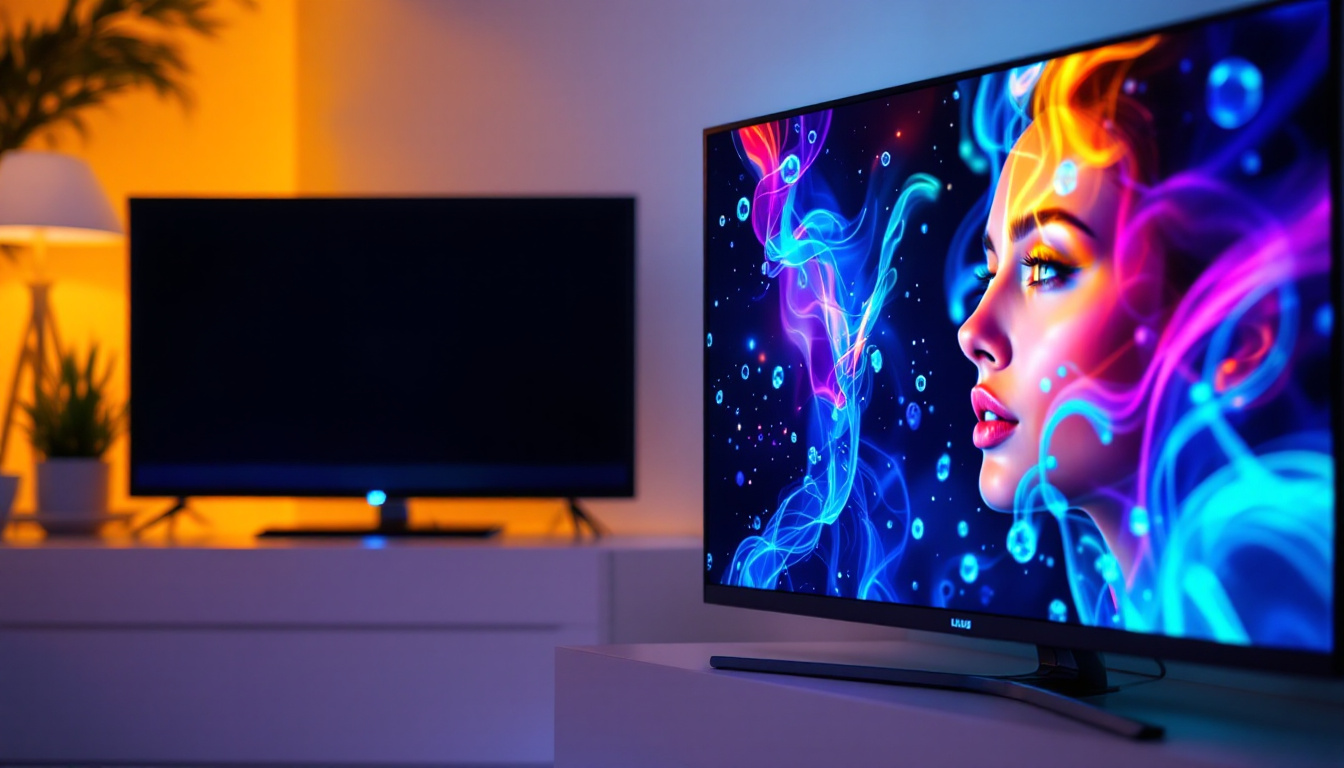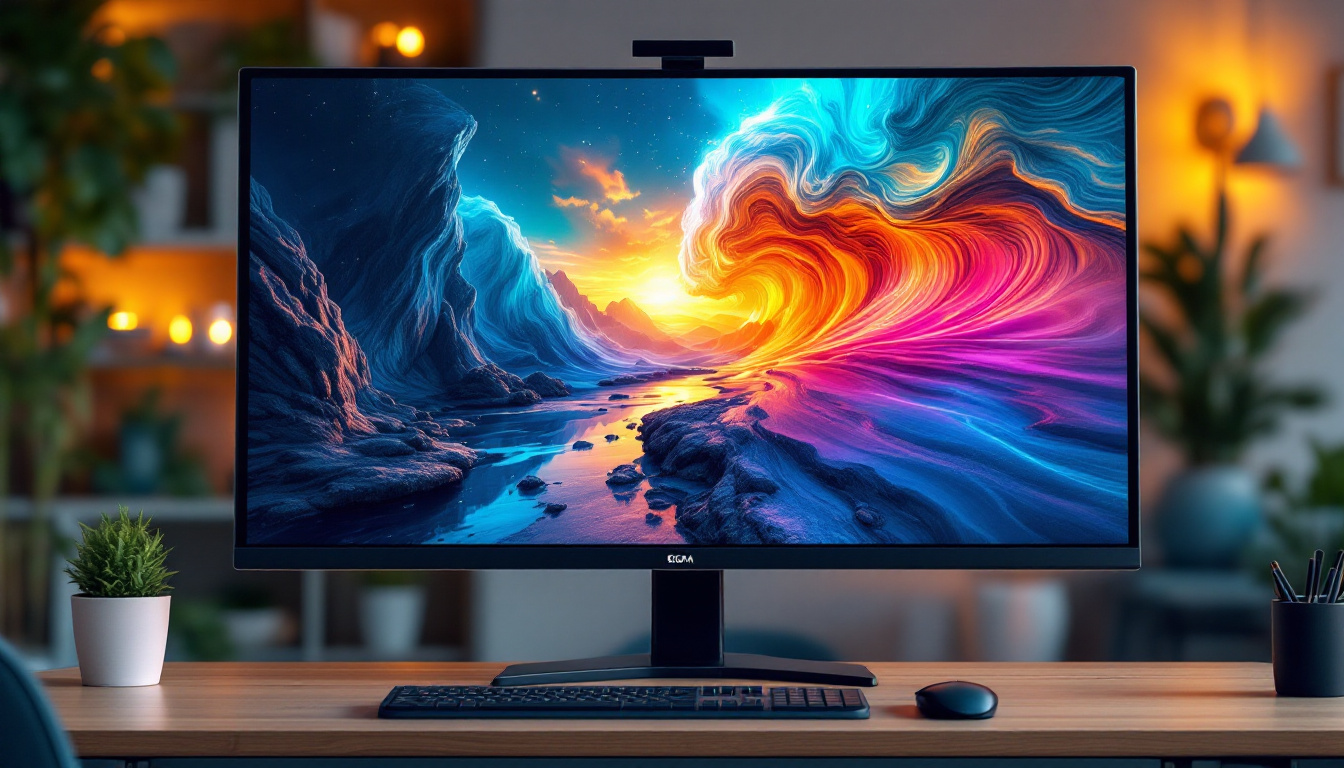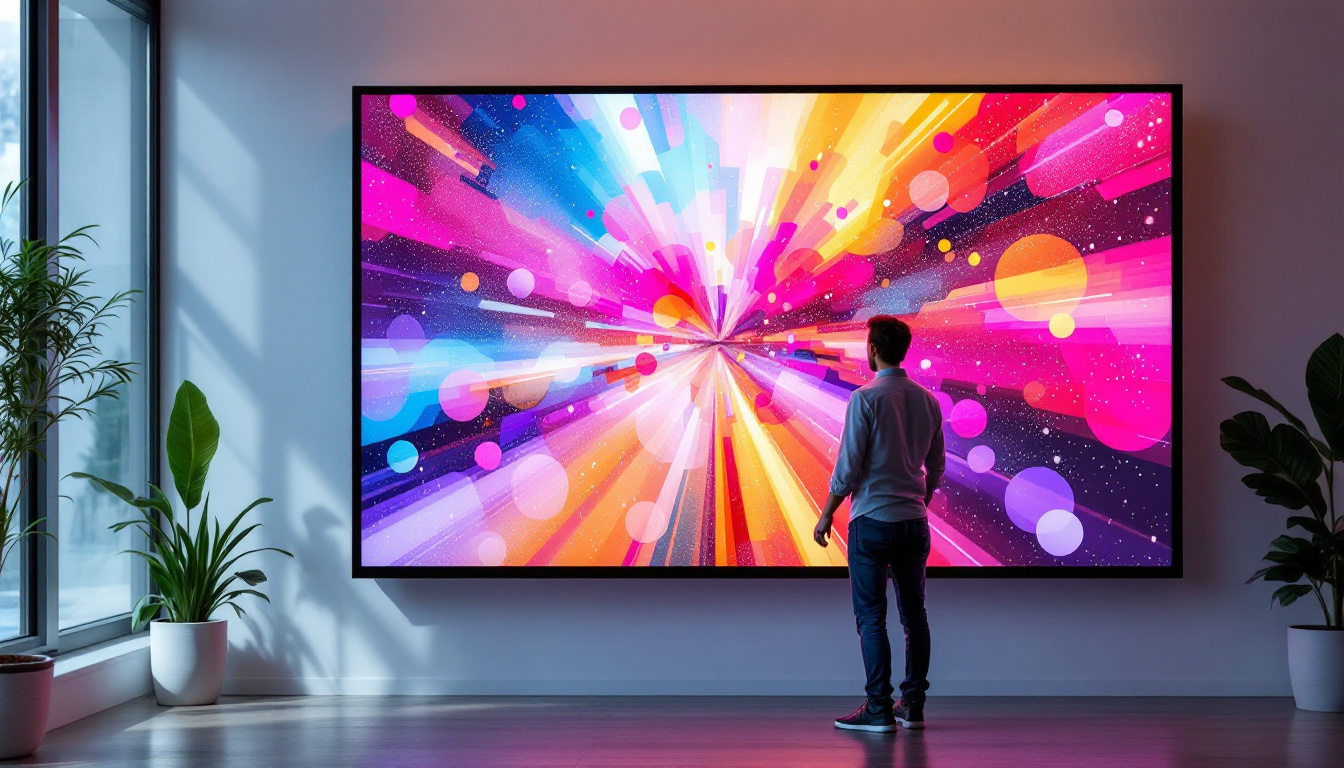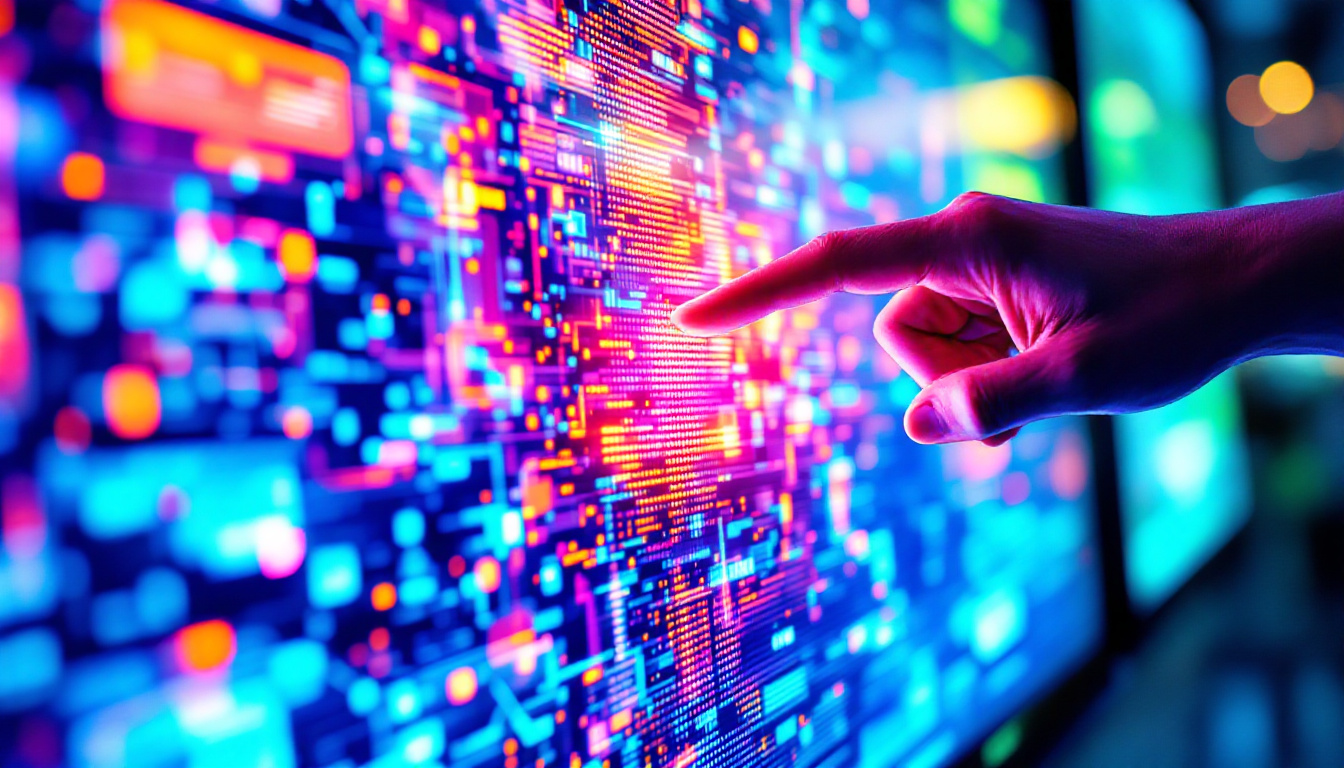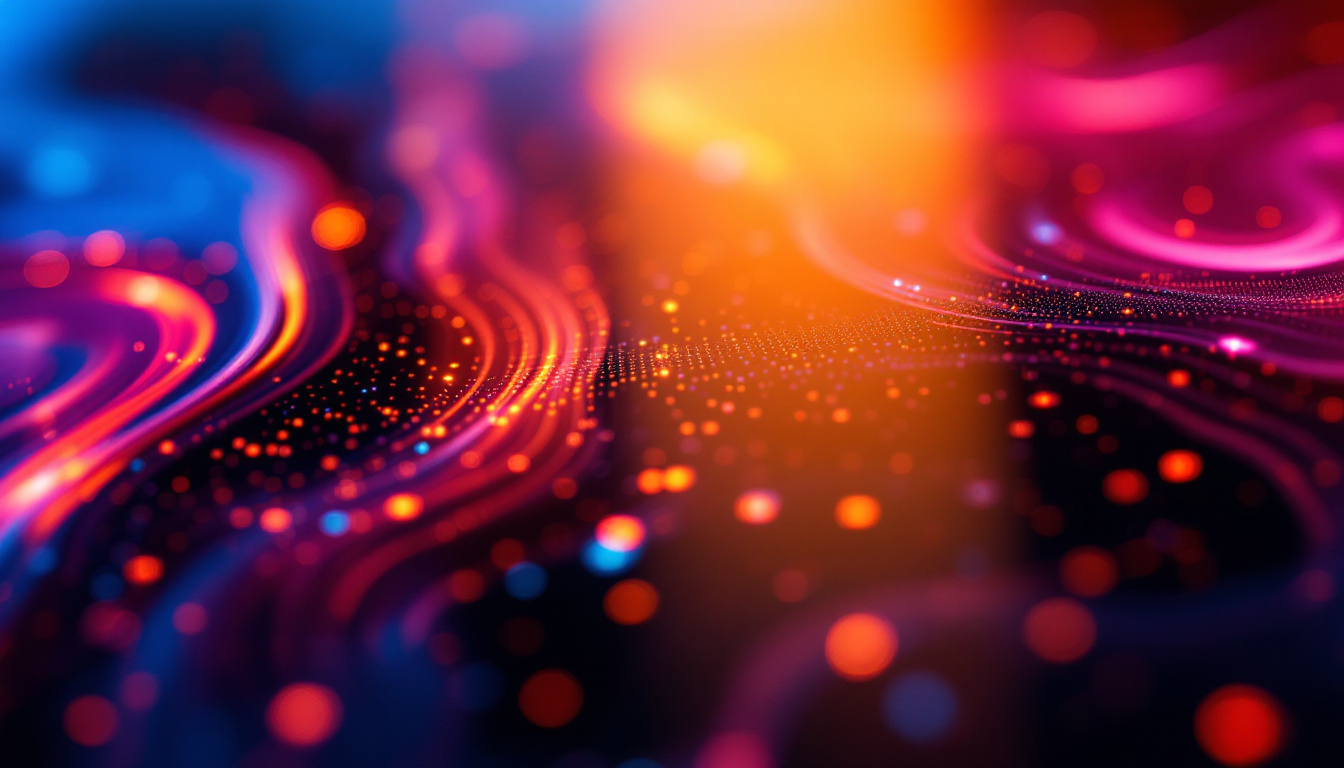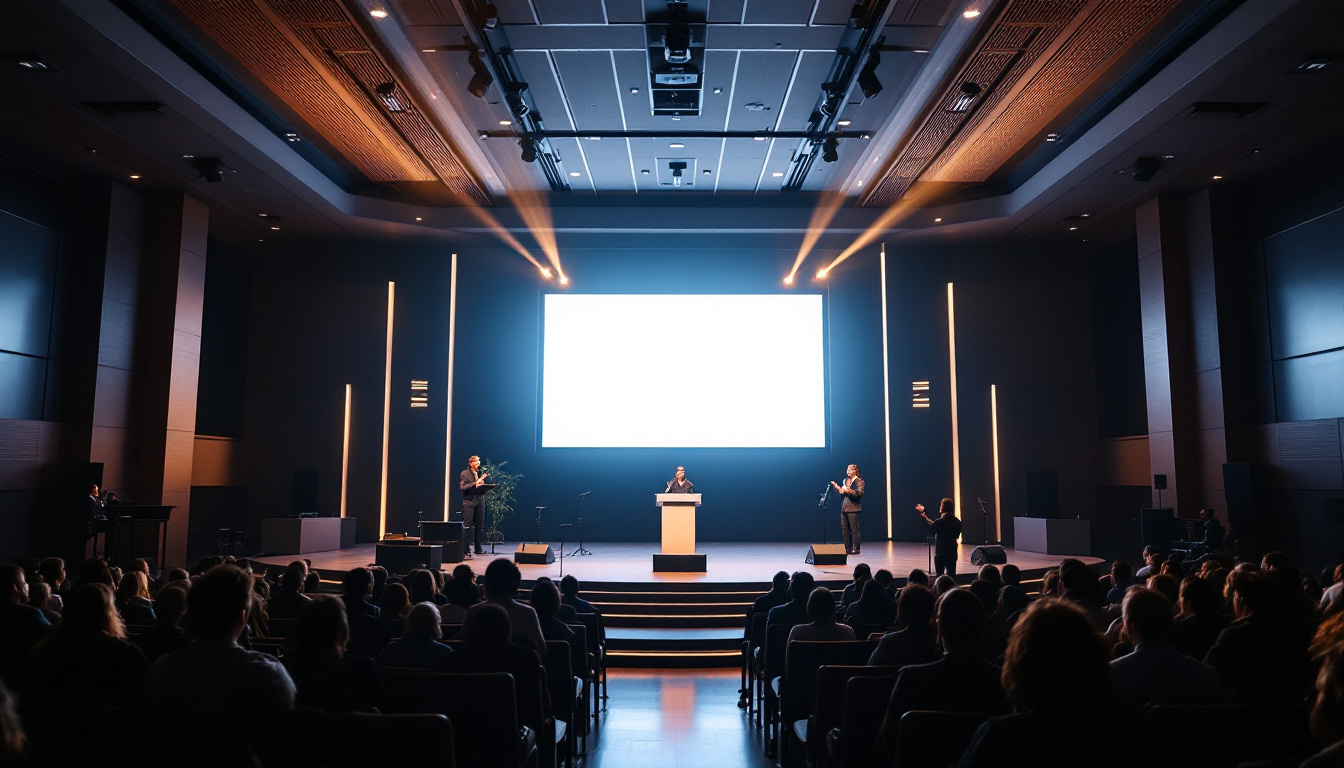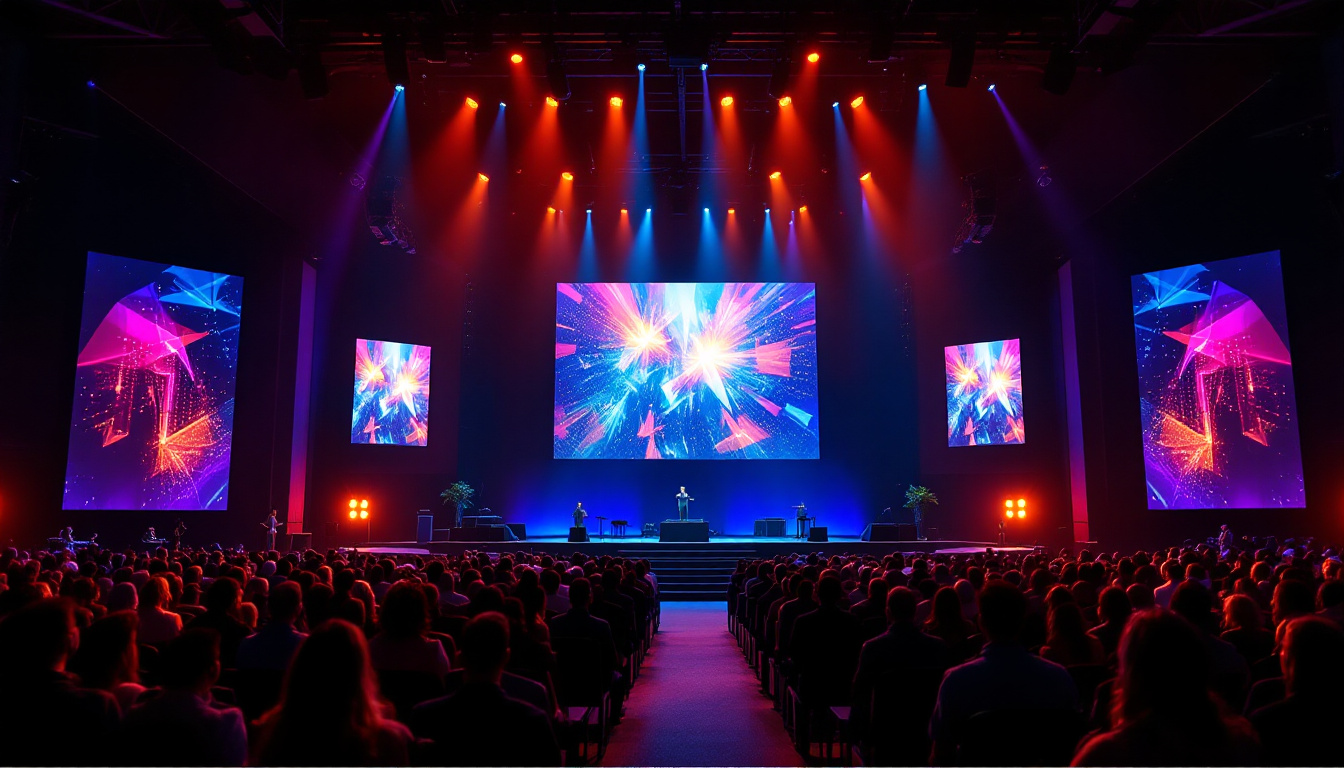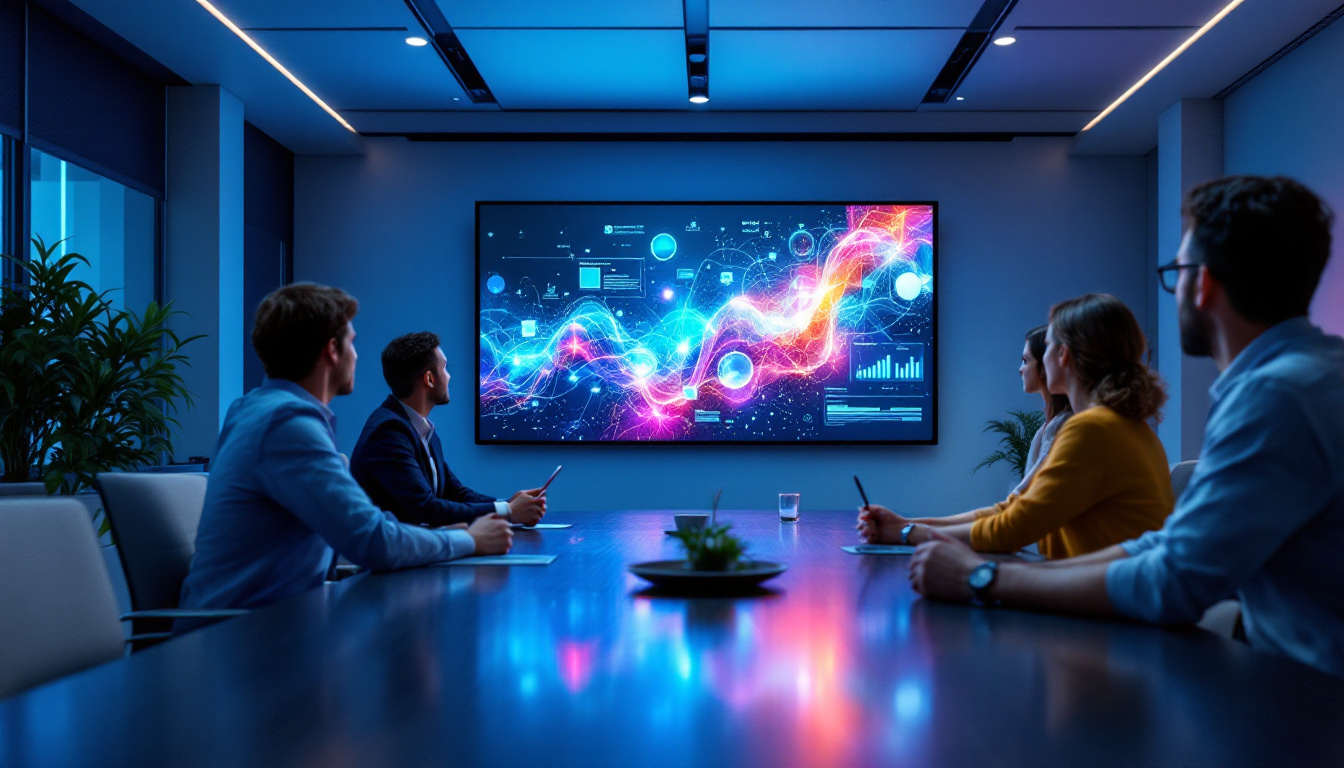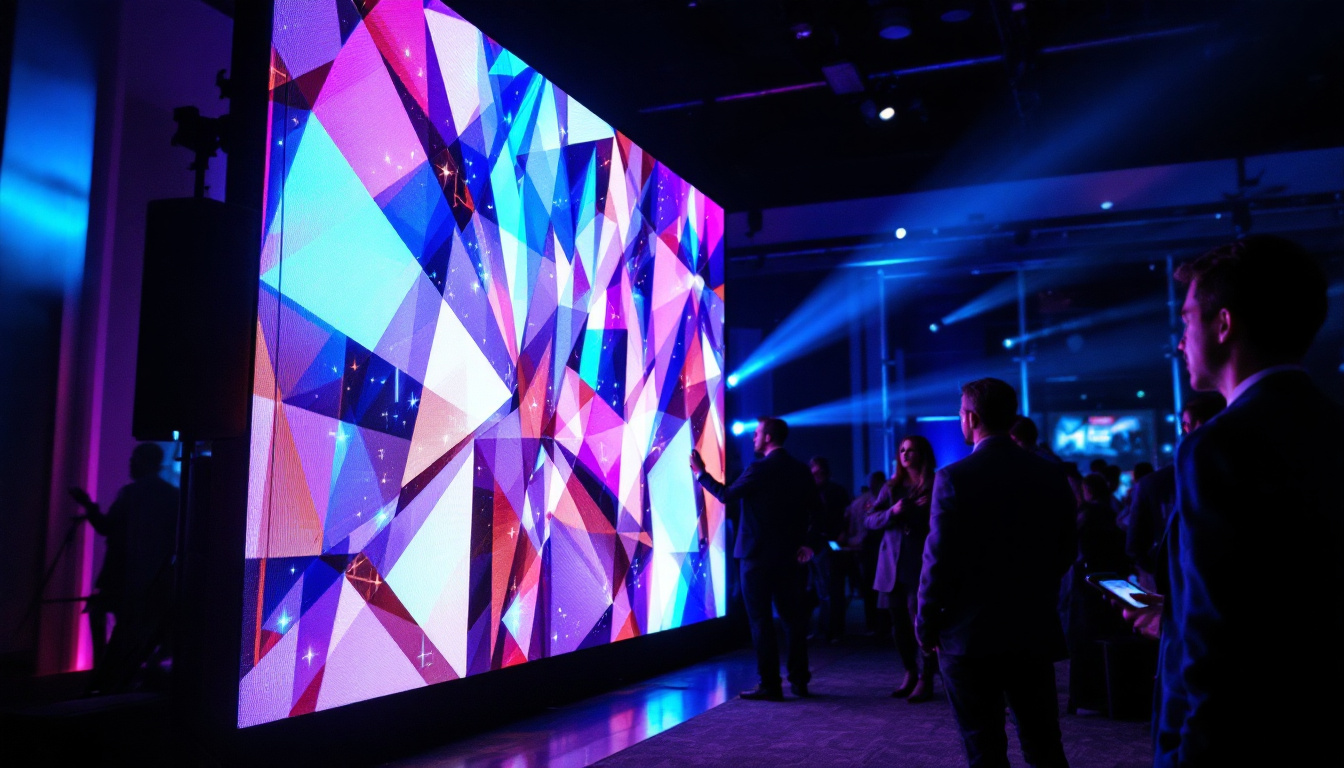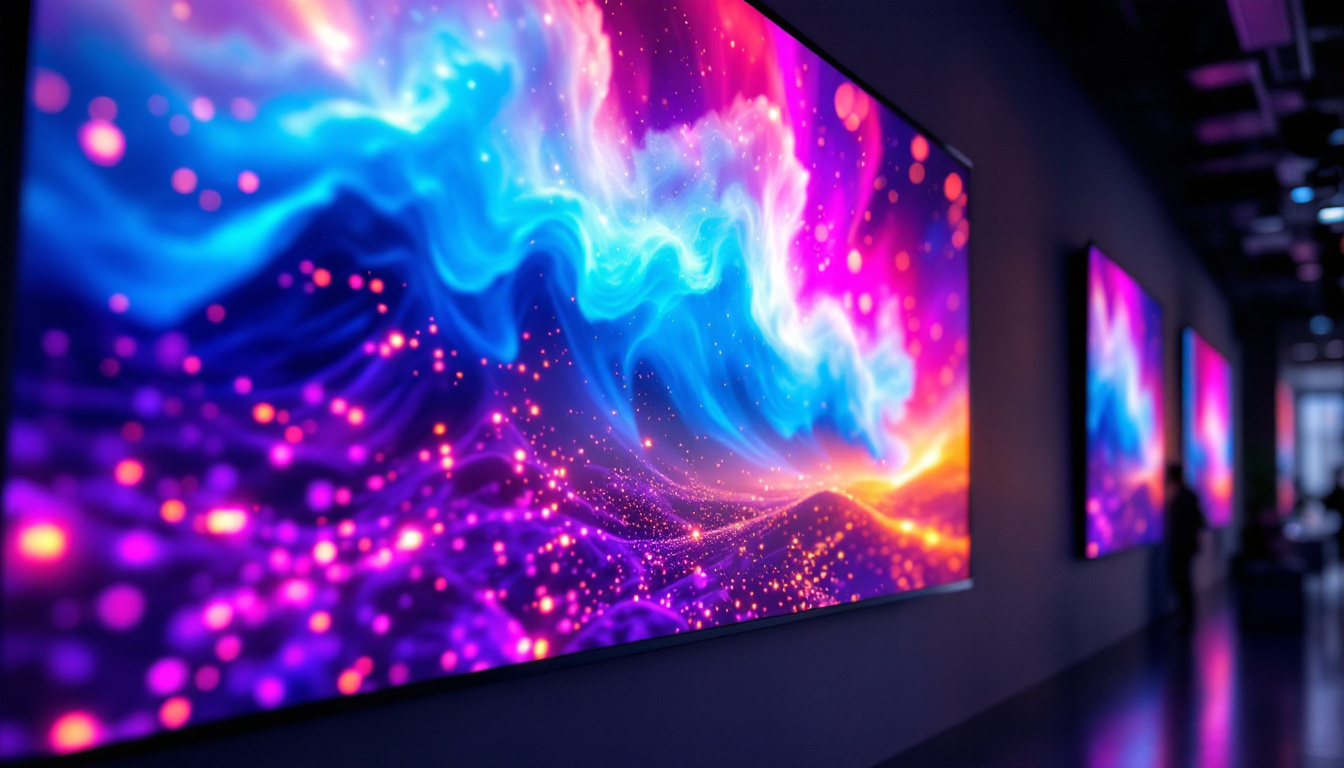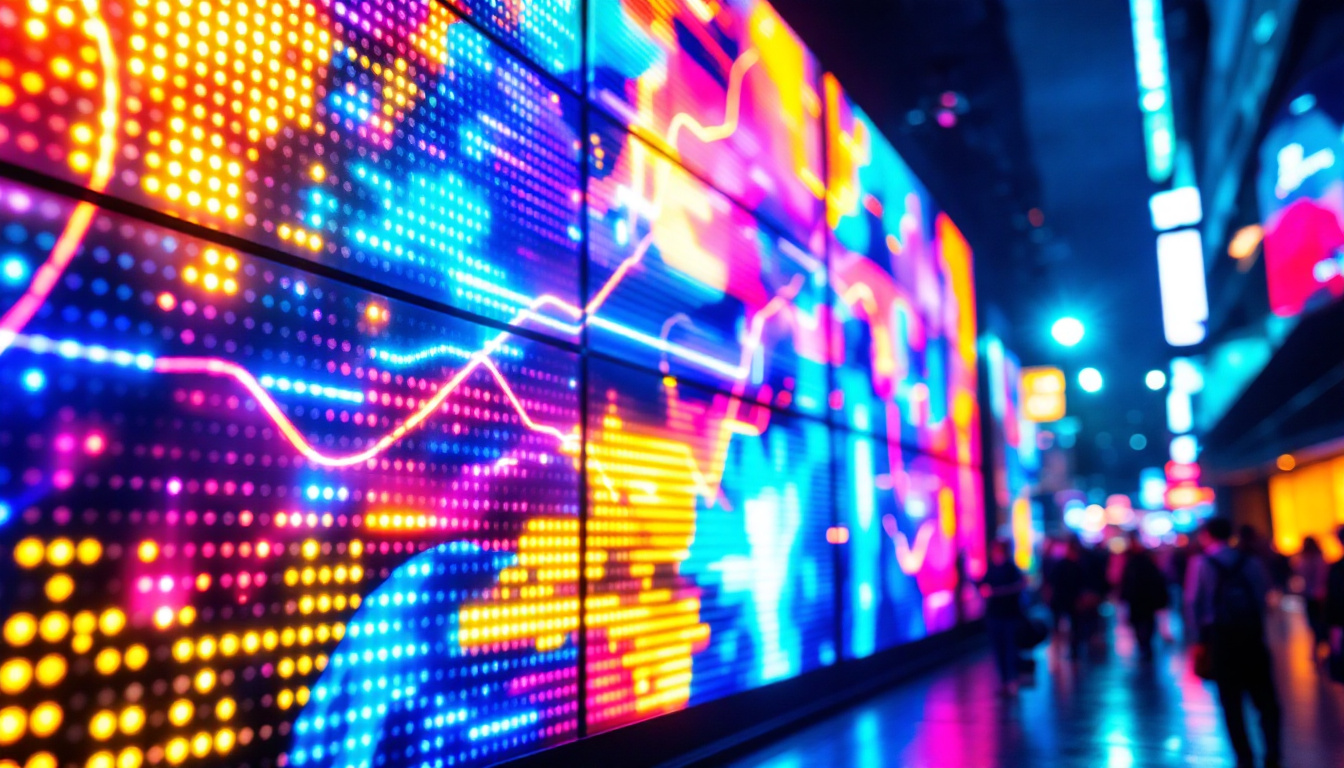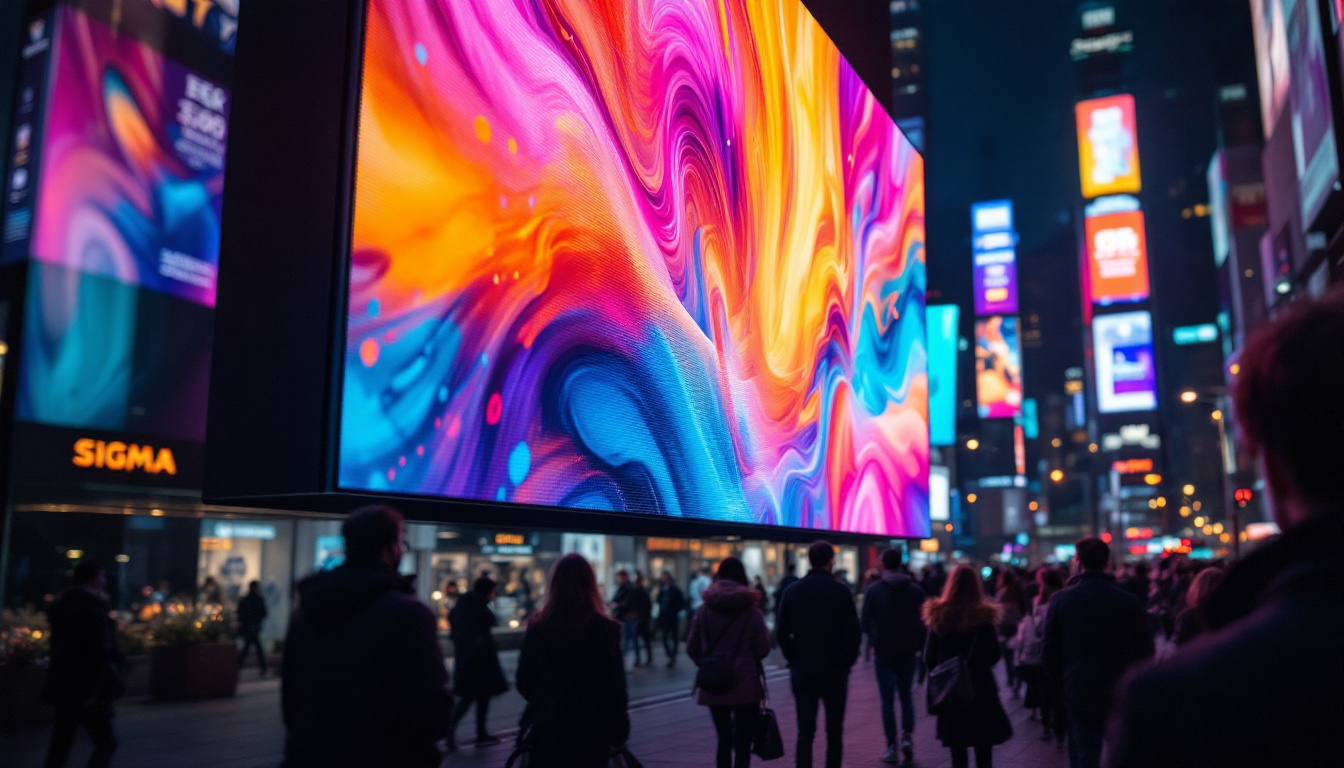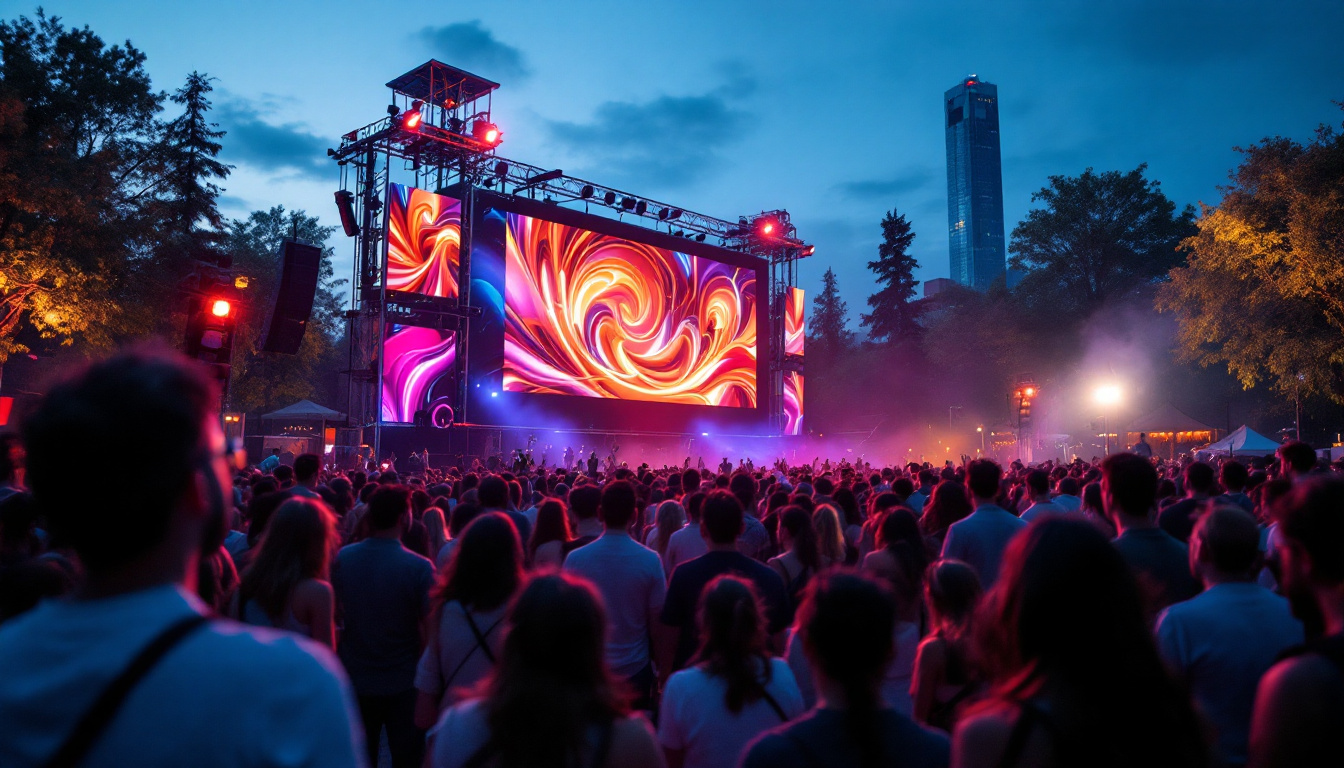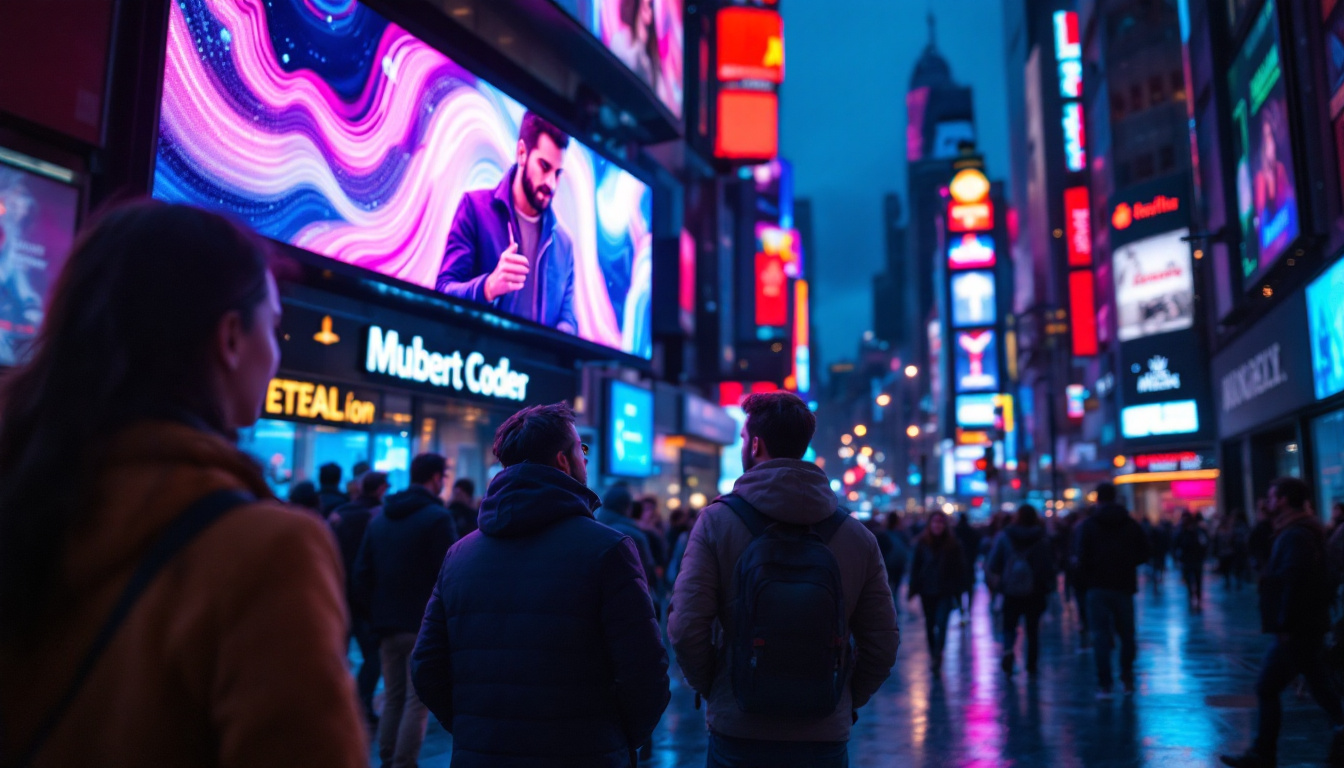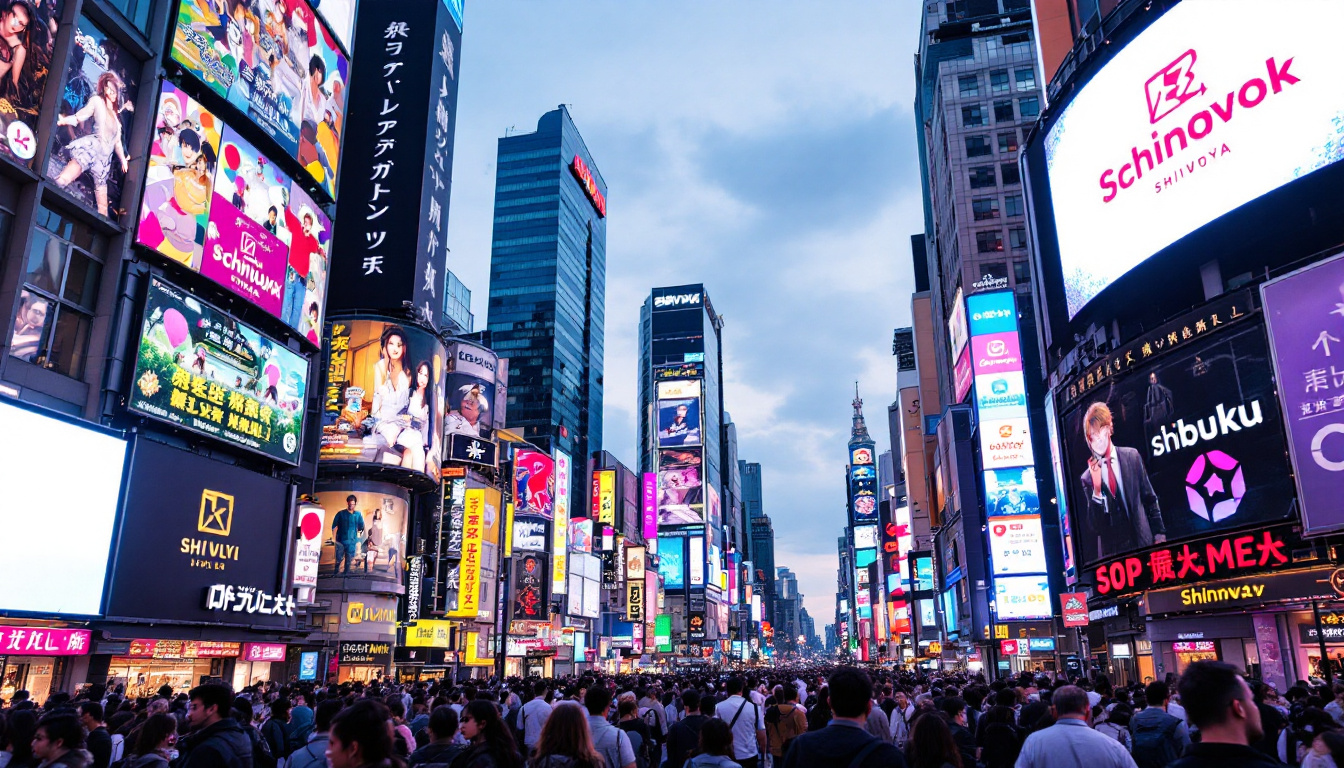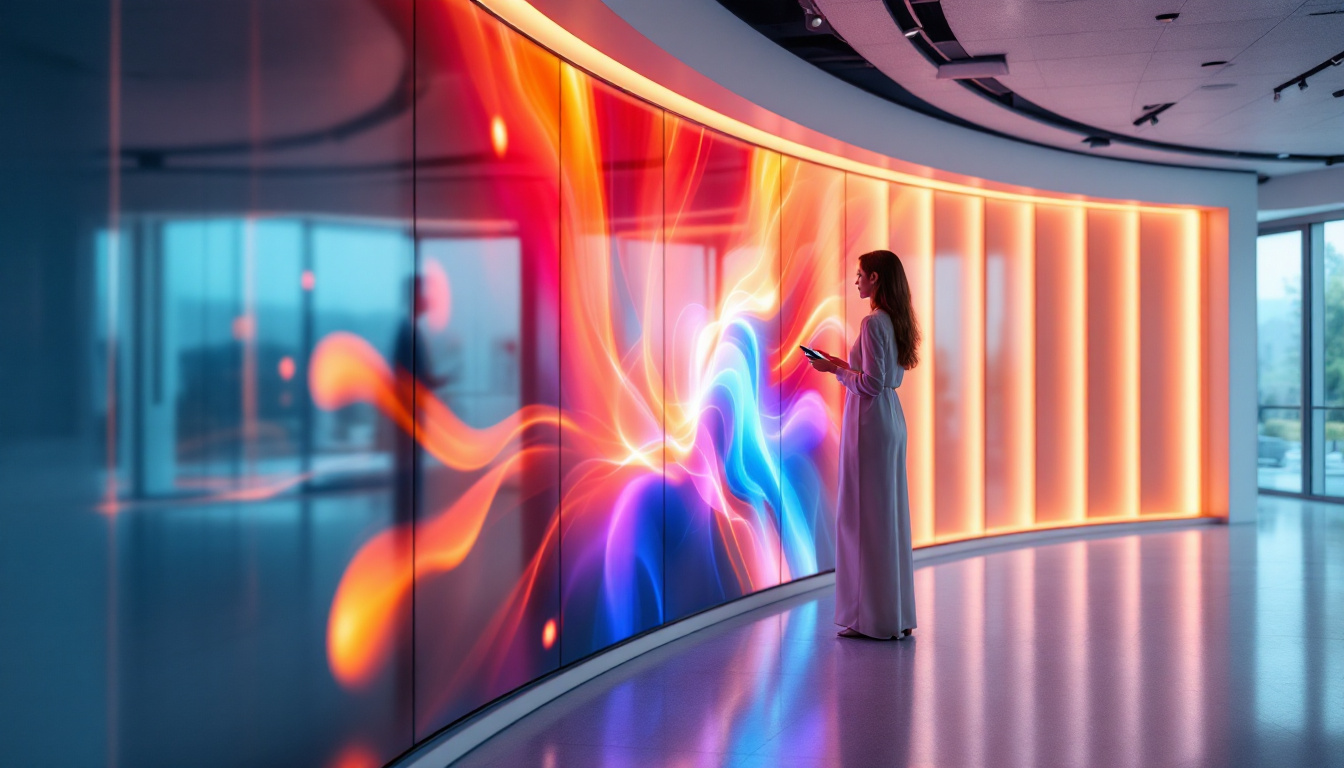In today’s digital age, the demand for vibrant and eye-catching displays is at an all-time high. One of the leading technologies that have emerged to meet this demand is the LED display. From large billboards to small screens in retail environments, LED displays have become ubiquitous. This article delves into the intricacies of LED display technology, its applications, advantages, and future trends.
Understanding LED Technology
LED, or Light Emitting Diode, is a semiconductor device that emits light when an electric current passes through it. This technology has revolutionized the way visual information is presented, providing a more efficient and versatile alternative to traditional display methods. The energy efficiency of LEDs is particularly noteworthy; they consume significantly less power compared to incandescent and fluorescent lights, making them an eco-friendly choice for both consumers and businesses alike.
The Basics of LED Displays
LED displays are composed of numerous tiny light-emitting diodes, which are arranged in a grid-like pattern. Each LED can emit various colors, allowing for the creation of full-color images and videos. The brightness and clarity of these displays make them suitable for both indoor and outdoor environments. In fact, outdoor LED displays are often designed to withstand harsh weather conditions, ensuring durability and longevity, which is crucial for advertising billboards and public information screens.
There are primarily two types of LED displays: direct view and backlit. Direct view LED displays utilize individual LEDs to create images, while backlit displays use LEDs to illuminate an LCD panel. Each type has its own set of advantages and applications, catering to different needs. For instance, direct view displays are often used in large-scale events and concerts, where high brightness and visibility from a distance are essential, while backlit displays are commonly found in televisions and smartphones, offering a sleek design and high resolution.
How LED Displays Work
LED displays operate on a simple principle: when a voltage is applied to the semiconductor material, electrons recombine with holes, releasing energy in the form of light. This process is known as electroluminescence. The color of the emitted light depends on the materials used in the semiconductor. This technology not only allows for vibrant colors but also contributes to the longevity of the displays, as LEDs can last tens of thousands of hours without significant degradation in performance.
In a full-color LED display, red, green, and blue (RGB) LEDs are combined in various intensities to produce a wide spectrum of colors. By adjusting the brightness of each color, the display can create millions of different shades, resulting in vibrant and dynamic visuals. Moreover, advancements in LED technology have led to the development of features such as pixel pitch, which refers to the distance between the centers of two adjacent pixels. A smaller pixel pitch results in higher resolution and sharper images, making it ideal for applications where detail is crucial, such as in digital signage and high-definition video walls.
Applications of LED Displays
LED displays have found their way into various sectors, transforming the way information is communicated. Their versatility and efficiency make them ideal for numerous applications.
Advertising and Marketing
One of the most prominent uses of LED displays is in advertising. Digital billboards and signage are increasingly common in urban areas, capturing the attention of passersby with bright colors and moving images. The ability to change content quickly allows advertisers to tailor messages based on time, audience, or location, maximizing engagement.
Moreover, LED displays can be used for promotional events, product launches, and interactive marketing campaigns, enhancing the overall consumer experience. This adaptability has made them a favorite among marketers looking to create memorable impressions. The integration of QR codes and interactive elements on LED screens also allows for a seamless transition from digital to physical engagement, encouraging consumers to interact with brands in innovative ways.
Entertainment Industry
In the entertainment sector, LED displays play a crucial role in concerts, theaters, and sporting events. Large LED screens are used to display live feeds, graphics, and animations, enriching the audience’s experience. Their high brightness and contrast ratios ensure that visuals remain clear and vibrant, even in well-lit environments.
Additionally, LED technology is utilized in stage lighting and set design, allowing for dynamic backdrops and effects that can change throughout a performance. This integration of LED displays into live events has redefined audience engagement. For instance, during music festivals, LED walls can create immersive environments that synchronize with the rhythm of the music, enhancing the overall atmosphere and making the event unforgettable. The use of LED technology also extends to film production, where LED screens are increasingly replacing traditional green screens, providing realistic backgrounds and lighting effects that can be adjusted in real time.
Transportation and Public Information
LED displays are also widely employed in transportation systems, providing real-time information to passengers. From train stations to airports, these displays can show arrival and departure times, flight information, and even advertisements. Their visibility and reliability make them essential for efficient communication in busy transit environments.
Public information displays in cities often utilize LED technology to convey important messages, such as emergency alerts, weather updates, and traffic information. This capability enhances public safety and keeps citizens informed. Furthermore, the use of LED displays in smart city initiatives is on the rise, as they can be integrated with IoT systems to provide real-time data analytics. This allows for better traffic management, public safety measures, and even environmental monitoring, ultimately contributing to more efficient urban living. As cities continue to evolve, LED displays will play a pivotal role in creating a connected and informed community.
Advantages of LED Displays
The growing popularity of LED displays can be attributed to several key advantages that set them apart from traditional display technologies.
Energy Efficiency
One of the most significant benefits of LED displays is their energy efficiency. Compared to traditional incandescent or fluorescent displays, LED technology consumes considerably less power. This not only reduces operational costs but also minimizes environmental impact.
Furthermore, the longevity of LED displays contributes to their sustainability. With lifespans often exceeding 50,000 hours, these displays require less frequent replacement, leading to reduced waste and resource consumption.
High Brightness and Contrast
LED displays are known for their exceptional brightness and contrast levels. This makes them ideal for outdoor applications where sunlight can wash out other types of displays. The ability to maintain visibility in various lighting conditions ensures that content is always clear and engaging.
Additionally, the high contrast ratio of LED displays enhances image quality, making colors appear more vibrant and details sharper. This is particularly important in applications where visual clarity is paramount, such as advertising and entertainment.
Flexibility and Scalability
Another advantage of LED displays is their flexibility in design and installation. They can be configured in various shapes and sizes, allowing for creative applications in both indoor and outdoor settings. This adaptability makes them suitable for a wide range of projects, from large-scale installations to smaller, more intimate displays.
Moreover, LED technology can be easily scaled to meet specific requirements. Whether it’s a single unit or a massive video wall, LED displays can be customized to fit any space, providing a tailored solution for clients.
Future Trends in LED Display Technology
As technology continues to evolve, so too does the landscape of LED displays. Several trends are emerging that promise to shape the future of this industry.
Advancements in Miniaturization
One of the most exciting developments in LED technology is the miniaturization of components. MicroLED and miniLED technologies are paving the way for smaller, more efficient displays that maintain high performance. These advancements allow for higher pixel densities and improved image quality, making them suitable for applications such as virtual reality and augmented reality.
As components become smaller, the potential for innovative designs increases, leading to new possibilities in display applications. This trend is likely to open up new markets and opportunities for creative expression.
Integration with Smart Technologies
Another significant trend is the integration of LED displays with smart technologies. As the Internet of Things (IoT) continues to expand, LED displays are becoming more connected and interactive. This allows for real-time data integration, enabling displays to respond dynamically to changing conditions or audience interactions.
For example, smart LED displays can adjust brightness based on ambient light, display personalized content based on viewer demographics, or even interact with mobile devices. This level of interactivity enhances user engagement and creates a more personalized experience.
Sustainability Initiatives
As environmental concerns grow, the LED display industry is increasingly focusing on sustainability. Manufacturers are exploring eco-friendly materials and production processes to minimize their carbon footprint. Additionally, the energy efficiency of LED technology positions it as a more sustainable option compared to traditional displays.
Future innovations may include recyclable components and energy harvesting technologies, further enhancing the sustainability of LED displays. This commitment to environmental responsibility is likely to resonate with consumers and businesses alike, driving demand for greener solutions.
Conclusion
LED display technology has transformed the way information is presented and consumed across various sectors. With their energy efficiency, high brightness, and versatility, LED displays have become indispensable tools for advertising, entertainment, and public communication.
As advancements continue to emerge, the future of LED displays looks promising. From miniaturization to smart technology integration and sustainability initiatives, the industry is poised for significant growth and innovation. Embracing these trends will not only enhance the visual experience but also contribute to a more connected and sustainable world.
In summary, LED displays represent a remarkable convergence of technology and creativity, offering endless possibilities for engaging audiences and conveying messages effectively. As the demand for dynamic and interactive displays continues to rise, LED technology will undoubtedly play a pivotal role in shaping the future of visual communication.
Discover the Future of Visual Communication with LumenMatrix
Ready to elevate your visual impact? LumenMatrix is at the forefront of LED display innovation, offering a comprehensive range of solutions tailored to your needs. From Indoor and Outdoor LED Wall Displays to specialized options like Vehicle, Sports, and Floor LED Displays, we have the technology to bring your vision to life. Experience the difference with our Custom, All-in-One, and Transparent LED Displays, designed to captivate your audience and amplify your message. Check out LumenMatrix LED Display Solutions today and join the revolution in visual communication.

